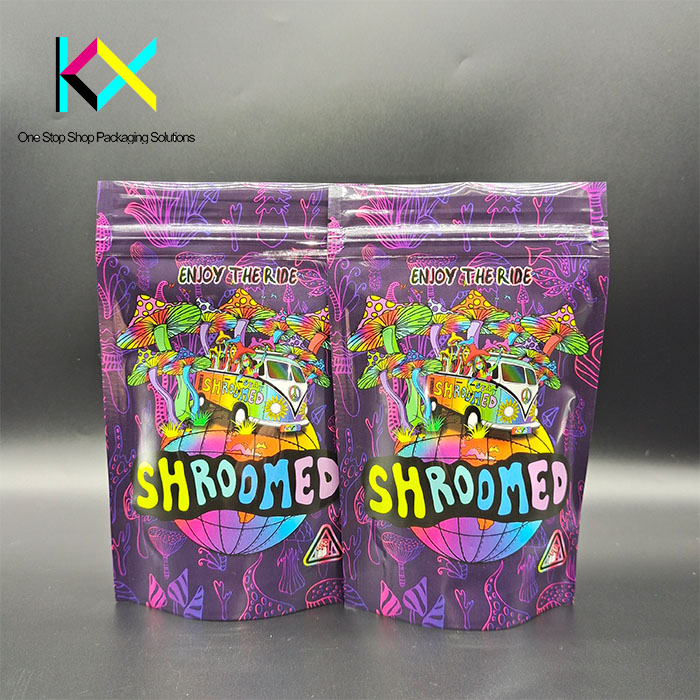Considerations for Barcode Printing on Food Packaging Bags: The Role of Digital Printing Technology
Barcodes are an essential part of modern food packaging. They enable efficient inventory management, streamline the checkout process, and ensure product traceability from production to sale. The process of printing barcodes on food packaging bags requires precision and attention to detail to ensure the barcode functions correctly and complies with industry standards. In this article, we will explore key considerations for barcode printing on food packaging bags, with a particular focus on the role of digital printing technology in optimizing barcode quality and functionality.


1. Barcode Quality and Resolution
One of the most critical factors in barcode printing is ensuring high print quality. A barcode must be printed with precise lines and spaces that adhere to the ISO standards for barcode dimensions. If the lines are too thick, too thin, or if the spacing is incorrect, the barcode may become unreadable by scanners, leading to scanning errors and operational inefficiencies.
Digital printing technology excels in producing high-resolution prints, which is particularly beneficial for barcodes. Unlike traditional printing methods, digital printing does not require plates or screens, and it can easily accommodate complex designs without compromising the clarity of small, intricate details like barcodes. The ability to print with high dpi (dots per inch) ensures that the barcodes on food packaging bags are crisp, sharp, and legible, regardless of the size or complexity of the barcode.



2. Material Compatibility
Different food packaging materials, such as plastic films, paper bags, and biodegradable plastics, may behave differently when printing barcodes. It is crucial to ensure that the digital printing process is compatible with the chosen packaging material. Digital printing offers flexibility in printing on various substrates, including both flexible and rigid materials, ensuring that barcodes remain clear and scannable even on challenging surfaces.
For instance, when printing on plastic food packaging bags, the smooth surface of the plastic requires precise ink adhesion to avoid smudging or fading. Digital printing technology uses specialized inks that bond well to various materials, ensuring long-lasting prints that can withstand handling, environmental factors, and moisture.


3. Barcode Placement and Size
Proper placement of the barcode on the packaging is vital for both readability and aesthetics. The barcode should be positioned in an area that is easily visible and accessible to scanners, but it should not interfere with other design elements or product information. Additionally, the size of the barcode should comply with industry standards to ensure optimal scanning distance and accuracy.
Digital printing technology allows for precise and consistent placement of barcodes, making it easy to align the barcode within the required space on the packaging. Since digital printing is ideal for small runs and custom designs, it enables manufacturers to make quick adjustments to barcode placement based on the packaging design, ensuring the barcode is printed in the correct location without distortion or misalignment.




4. Durability and Longevity of the Barcode
Food packaging bags are often subjected to handling, transportation, and exposure to various environmental conditions. For barcodes to remain functional throughout the product’s life cycle, the print must be durable enough to withstand abrasion, moisture, temperature fluctuations, and exposure to sunlight. Digital printing offers enhanced durability, as it uses UV-cured or water-based inks that are resistant to fading and smudging. These inks adhere firmly to the surface, ensuring that barcodes maintain their readability throughout the product’s journey from manufacturer to retailer.
Additionally, digital printing can incorporate protective coatings or laminations that further enhance the durability of the barcode, ensuring it remains scannable even in harsh conditions, such as when food packaging bags are exposed to refrigeration or condensation.
5. Compliance with Industry Standards
Barcode printing on food packaging must comply with specific industry standards, such as GS1, which defines barcode formats, dimensions, and quality control requirements. Non-compliant barcodes can result in operational delays, errors in inventory management, and issues with retail scanning systems.
Digital printing allows manufacturers to easily meet these compliance standards by ensuring precise dimensions, accurate data encoding, and optimal contrast between the barcode and its background. Digital printers can also incorporate special features, such as the use of high-contrast inks that make barcodes stand out against the packaging background, improving scan accuracy.
6. Benefits of Digital Printing for Barcode Printing on Food Packaging Bags
The adoption of digital printing for barcode printing on food packaging bags offers several advantages over traditional printing methods:
- Flexibility and Customization: Digital printing allows for the quick and efficient customization of barcode designs. It is particularly useful for businesses that have multiple product variants or seasonal promotions, as it eliminates the need for retooling or creating new plates.
- Cost-Effectiveness: For small production runs or customized packaging, digital printing is more cost-effective compared to traditional offset or flexographic printing. It reduces setup costs and minimizes material waste.
- High-Quality and Precision: Digital printing ensures high-resolution output, producing sharp and accurate barcodes that are easy to scan, reducing errors in the supply chain.
Conclusion
Barcode printing on food packaging bags is a crucial step in the supply chain, and getting it right is essential for operational efficiency and consumer satisfaction. Digital printing technology plays a pivotal role in ensuring that barcodes are printed with high quality, precision, and durability. By offering flexibility in material compatibility, size, placement, and design, digital printing ensures that food packaging bags are compliant with industry standards, all while maintaining the integrity and functionality of the barcode. As the demand for high-quality, efficient, and sustainable packaging solutions grows, digital printing will continue to be an essential tool for ensuring the accuracy and effectiveness of barcode printing in the food industry.
You can visit our website to know more about our flexible packaging pouch:
